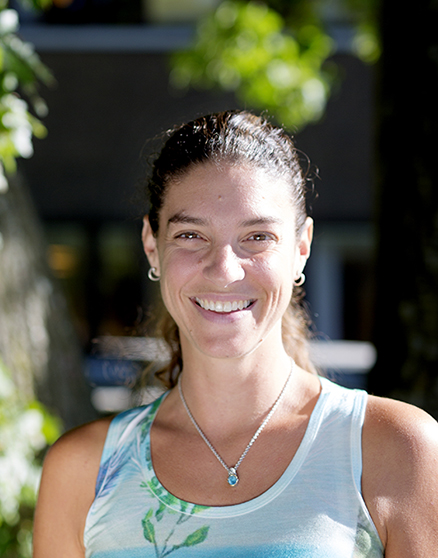
The plastics that we are exposed to via our everyday usage of plastic products compared with drinking water.
Plastic products frequently contain different chemicals. One example is bisphenol A which is one of the most common plastic chemicals in the world. Bisphenol A is an endocrine-disturbing substance. Constant exposure to bisphenol A can lead to increased levels in humans which has been associate with health hazards.
 “Plastics play a major role in our everyday lives. If we concentrate too much on microplastics in individual food items, for example fish and shellfish, there is a risk that focus will be shifted away from the cause of the problem, namely, how we produce and consume plastic,” says Bethanie Carney Almroth, University of Gothenburg, who does research on ecotoxicology and environmental science and who is a member of the research team.
“Plastics play a major role in our everyday lives. If we concentrate too much on microplastics in individual food items, for example fish and shellfish, there is a risk that focus will be shifted away from the cause of the problem, namely, how we produce and consume plastic,” says Bethanie Carney Almroth, University of Gothenburg, who does research on ecotoxicology and environmental science and who is a member of the research team.
Today, microplastic particles are found everywhere
In a new study, a research team consisting of researchers from the University of Gothenburg and the Technical University of Denmark has compared the amount of bisphenol A that enters a human body over the course of one year through the consumption of shellfish (which have in turn consumed microplastics) with the amount that same person consumes as a result of other sources of exposure.
The calculations showed that general exposure from other sources was 40 million times higher than exposure through microplastic-contaminated seafood. The study has been published in the scientific journal “Science of the Total Environment”.
Today, these small fragments of plastic known as microplastics, are found almost everywhere, including in tap water, beer, fish, table salt and other food products. This has led to discussions, both in the media and in the scientific field , about the possible health effects of microplastics.
The discussions have usually focused on the amount of microplastics found in specific food products. However, the researchers have shown that we are more exposed to microplastics through the ubiquitous use of different plastic materials in every part of our daily lives.
Our clothes are a source of pollution
Plastic fibres are known pollutants in air and indoor environments. Most of our clothes are made of synthetic materials which continuously shed fibres. The research group compared the contamination level of tap water with the amount of fibres that end up in a glass of water that has been standing on a table.
 “We did a quick test where we put a glass of water on a table to see how many fibres fell into it. After just four hours, we saw similar or higher levels of plastic fibres in the glass, compared with tap water,” says Therese Karlsson, doctoral student at the Department of Marine Sciences who does research on sources of plastic in the sea.
“We did a quick test where we put a glass of water on a table to see how many fibres fell into it. After just four hours, we saw similar or higher levels of plastic fibres in the glass, compared with tap water,” says Therese Karlsson, doctoral student at the Department of Marine Sciences who does research on sources of plastic in the sea.
She points out that little is known about the health effects of microplastics and nanoplastics.
“It is alarming that plastic particles are being found in so many places. It’s important that future research investigates the effects of both microplastics and nanoplastics. We are exposed to substantially larger amounts of plastics and their chemicals through other forms of exposure, than through contamination in individual food items. So we hope that in the future there will be more discussion about our consumption of plastics as a whole,” says Therese Karlsson.
The article: A critical perspective on early communications concerning human health aspects of microplastics
Contact:
Therese Karlsson, Department of Marine Sciences.
Telephone: 0766-185812, email: therese.karlsson@marine.gu.se
Photo:
Top picture: The plastics that we are exposed to via our everyday usage of plastic products compared with drinking water. Photographer: Therese Karlsson.
Portrait pictures of Bethanie Carney Almroth and Therese Karlsson

 “Plastics play a major role in our everyday lives. If we concentrate too much on microplastics in individual food items, for example fish and shellfish, there is a risk that focus will be shifted away from the cause of the problem, namely, how we produce and consume plastic,” says Bethanie Carney Almroth, University of Gothenburg, who does research on ecotoxicology and environmental science and who is a member of the research team.
“Plastics play a major role in our everyday lives. If we concentrate too much on microplastics in individual food items, for example fish and shellfish, there is a risk that focus will be shifted away from the cause of the problem, namely, how we produce and consume plastic,” says Bethanie Carney Almroth, University of Gothenburg, who does research on ecotoxicology and environmental science and who is a member of the research team. “We did a quick test where we put a glass of water on a table to see how many fibres fell into it. After just four hours, we saw similar or higher levels of plastic fibres in the glass, compared with tap water,” says Therese Karlsson, doctoral student at the Department of Marine Sciences who does research on sources of plastic in the sea.
“We did a quick test where we put a glass of water on a table to see how many fibres fell into it. After just four hours, we saw similar or higher levels of plastic fibres in the glass, compared with tap water,” says Therese Karlsson, doctoral student at the Department of Marine Sciences who does research on sources of plastic in the sea.